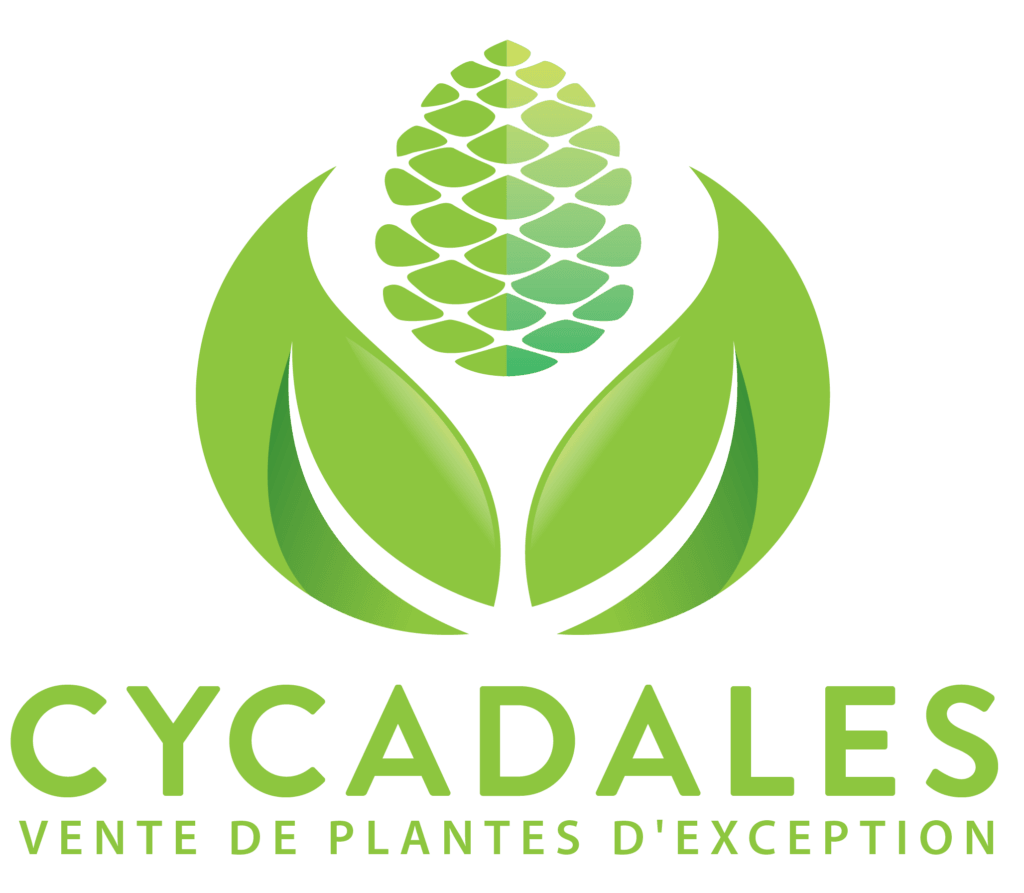Uncategorized
Basis of Platycerium ridleyi indoor cultivation in Europe
By Simon Lavaud – EURL Cycadales
To download the article in PDF, please click on the icon:

2 years old Platycerium ridleyi, grown from spores, 100 % grown indoor under LED
Disclaimer : This article represents my personal experience, there are as many cultivation methods as there are cultivators, what works for someone doesn’t necessarily work for someone else. My methods can be questionned and can probably be improved. This article gives cultivation basis and is mostly aimed toward beginners.
Introduction
This weird and fascinating fern comes from the South East Asia forests where it grows on tree branches and benefits of a fairly high luminosity as well as abundant rains in a tropical humid climate.
From a morphological point of view, 2 types of leaves can be distinguished : the shields that are rounded and embossed like a waffle, and the fertile fronds that are often called antlers refering to stag horns, which is why Platycerium are often called Staghorn Ferns.
These two types allow the plant to do photosynthesis that is necessary to the plant, but bear different functions.
The shields protect the rhizome and the roots, they help the plant to anchor itself to the tree branches by encompassing them. One of the aesthetical interest of the shields is their waffle appearance : it’s quite probably pre-galleries aimed at symbiotic ants that will establish their colonies under the shields. The plant offers housing to the ants and in return they protect it from predators and bring nutrients through their waste.
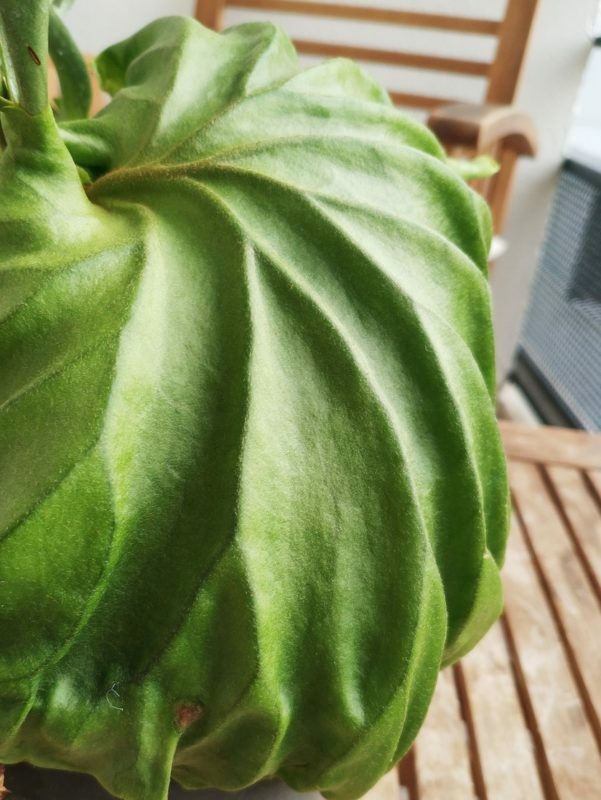
Fertile fronds, as their name suggests, produce spores. These spores develop under an appendice that looks like a spoon and allow the plant to reproduce. But that’s not their only feature ! These fronds are growing upright and have their lower parts chanelled which means that when it rains, every raindrop is directed toward the rhizome, allowing the plant to be watered !
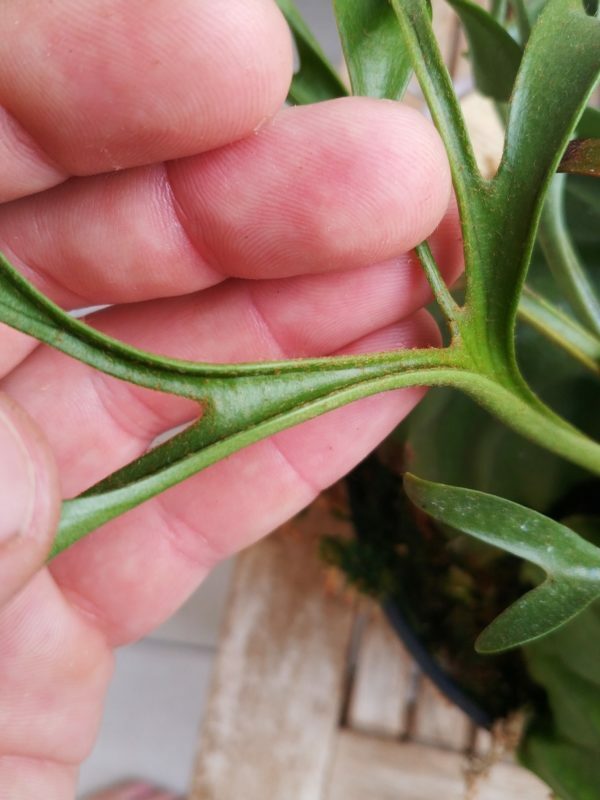
Platycerium ridleyi is charming in many aspects but remains relatively rare in cultivation in Europe. This species has the reputation to be difficult to grow for a simple reason : Most commercial cultivators of this species are in SE Asia, under a very humid climate (often 80 % RH and above) and hot (often around 30°C), these conditions are difficult to reach in our European indoors that are usually around 20°C and 50-60 % RH. And without speaking of the difficulties linked to acclimation of plants imported from the tropics.
It appears that when this species is grown from spores from the begining under our climate it’s much easier to grow ! This is what allows me to regularly offer itin the webshop by guaranteeing very healthy plants that are already acclimated to normal indoor conditions.
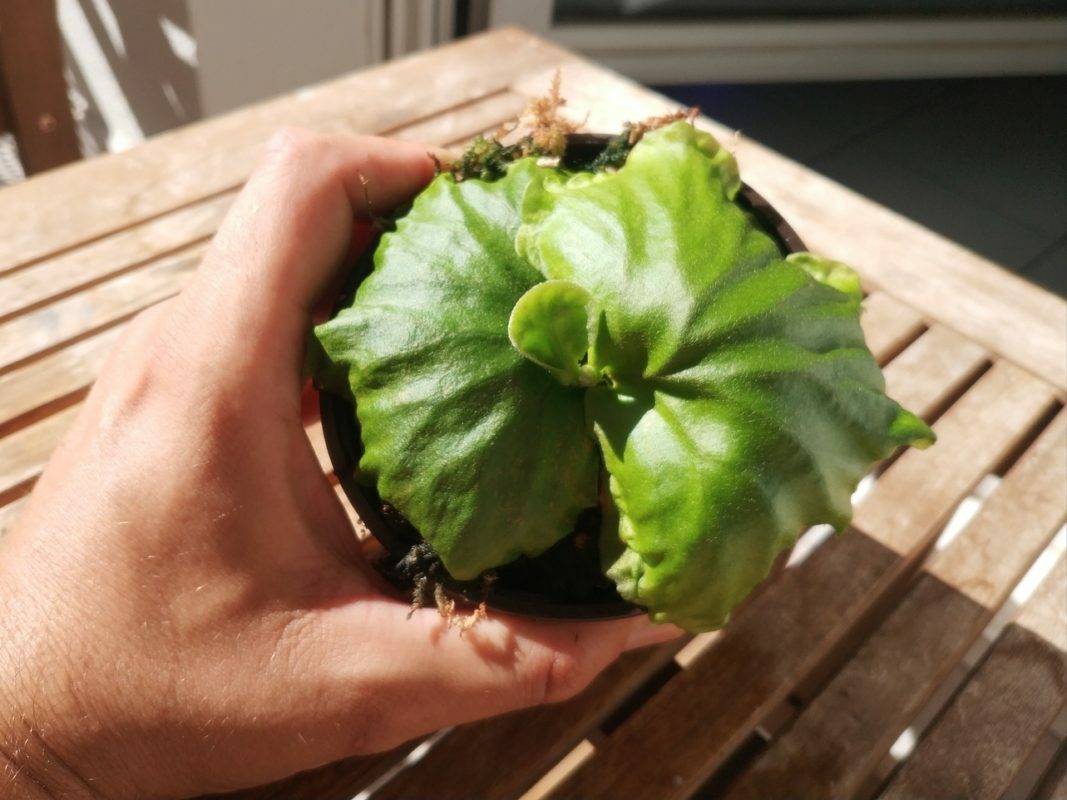
Growing medium :
These epiphytic plants are quite adaptable in terms of soil as song as it’s neutral to acidic, with a large organic fraction and retaining moisture well while being sufficiently aerated.
Personally, I use sphagnum moss that has the advantage of having an acidic pH and to retain moisture well. P. ridleyi seems to like it here, and seems to adapt well to the various conditions my customers provide it with.
Just make sure that the rhizome and base of the leaves is in contact to the sphagnum to promote root formation.
Container/support :
This species can be cultivated in plastic pots without problems. The only drawbacks are that the shields tend to encompass the pot and get damaged when the plant needs to be repoted, and plants need to be watered by the bottom of the pot since the shields cover the growing medium completely (see the part about watering)
Water and watering:
In nature, these plants get their water from the rain since they’re epiphytes, thus I recoment using deionized (= distilled, RO, reverse osmosis) water. It can be purchased in supermarkets or hardware stores (usually 5L drums) or in the aquarium sections of the garden centers and pet shops (in these stores, you can often get free deionized water if you have their membership card and bring your own containers). Or you can buy a small RO kit that allows you produce deionized water from your tap.
If you’re lucky enough to have access to rainwater or if your tap water has a very low mineral content you can use it instead of deionized water of course.
In the introduction I mentioned that these plants get their water from the rain, which means they’re watered from above in the tropics. Under our latitudes, I usually advise against this method because if water doesn’t evaporate quickly, it can cause necrosis on the shields.
The easiest watering solution is called the « tray method » : Just put your pot in a container with shallow water and allow the growing medium to absorb as much as possible and then remove it to avoid having it stand in too much water.
Plants can be watered when the sphagnum starts to dry out a bit on the surface. P. ridleyi is sensitive to drought so the sphagnum should never be allowed to dry completely (contrary to superbum, bifurcatum or veitchii that tolerate it without problems)
Fertilizer :
For me, the ideal fertilizers are the slow release ones because they’re not agressive and they don’t need to be applied frequently. I use an Osmocote fertilizer and after having tried various NPK, I didn’t notice differences in growth. I use Osmocote 15.9.11 with good results. I mix a few pellets of Osmocote to the growing medium ( for a 20cm diameter plants about 20-30 pellets) and renew every 6 months.
Temperature :
My plants are kept at a temperature varying between 20°C at night and 28°C during the day thanks to the heat the LED provide.
Light :
Since this species grows on top of trees, it’s seems obvious that it needs a fairly high light intensity. Here I grow them under BloomLed bars with about 80w/m² , the LED are 15-30cm from the plants. I am sure many other brands are as good or better, just make sure you buy good quality ones. The advantage of LED is that even if they don’t produce a lot of heat, that’s enough to raise the temperature locally a bit and benefits growth.
If you don’t use LED, a spot next to a well exposed window will be suitable. Just make sure the place is warm enough, around 20-22°C in order to get acceptable growth.
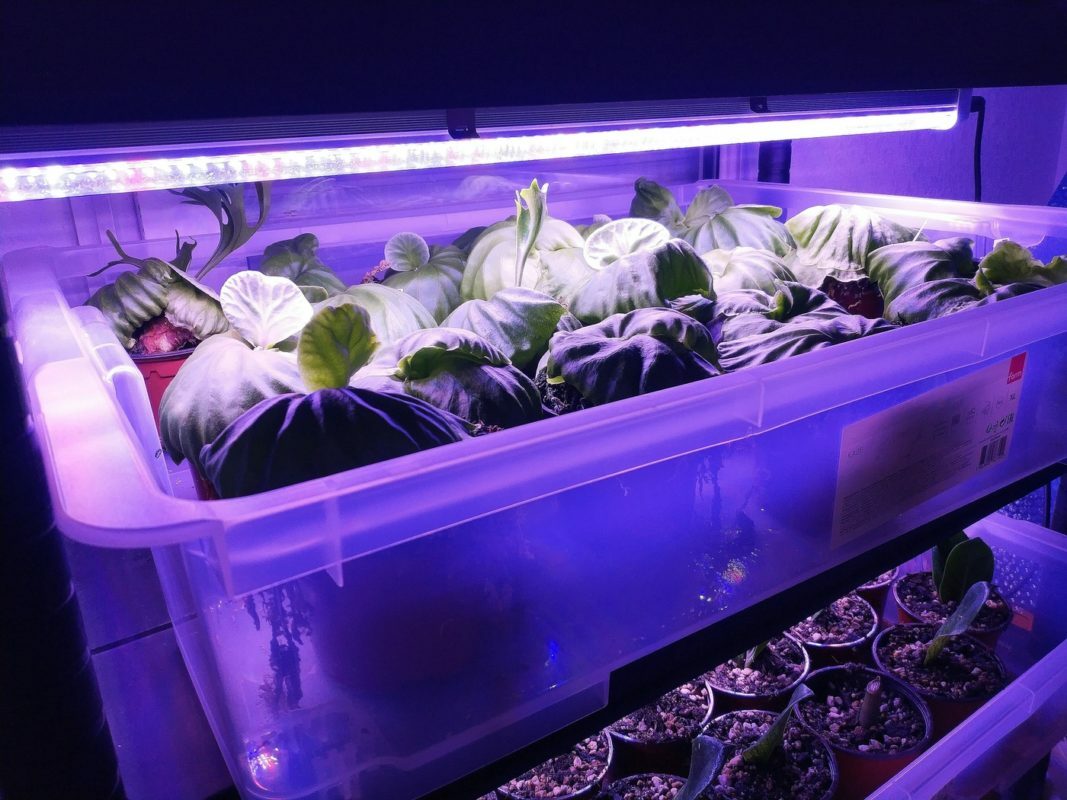
Pests :
Watch for snails and slugs ! Ridleyi is a real magnet for them and their tender leaves are no match for these voracious predators.
Other pests common to indoor plants are also susceptible to affect Platycerium, thus plants neeed to be inspected routinely and any new plant should be quarantined.
If you have questions, you can reach me through the contact form. And you can find all the availabilities under the Platycerium section of the shop or by clicking here !
Simon Lavaud, EURL Cycadales
A question? You can reach me using the contact form.
Useful links:
Wikipedia page on the genus Platycerium (in english) : https://en.wikipedia.org/wiki/Platycerium
An english speaking Facebook group dedicated to Platycerium cultivation:
https://www.facebook.com/groups/169581857915

